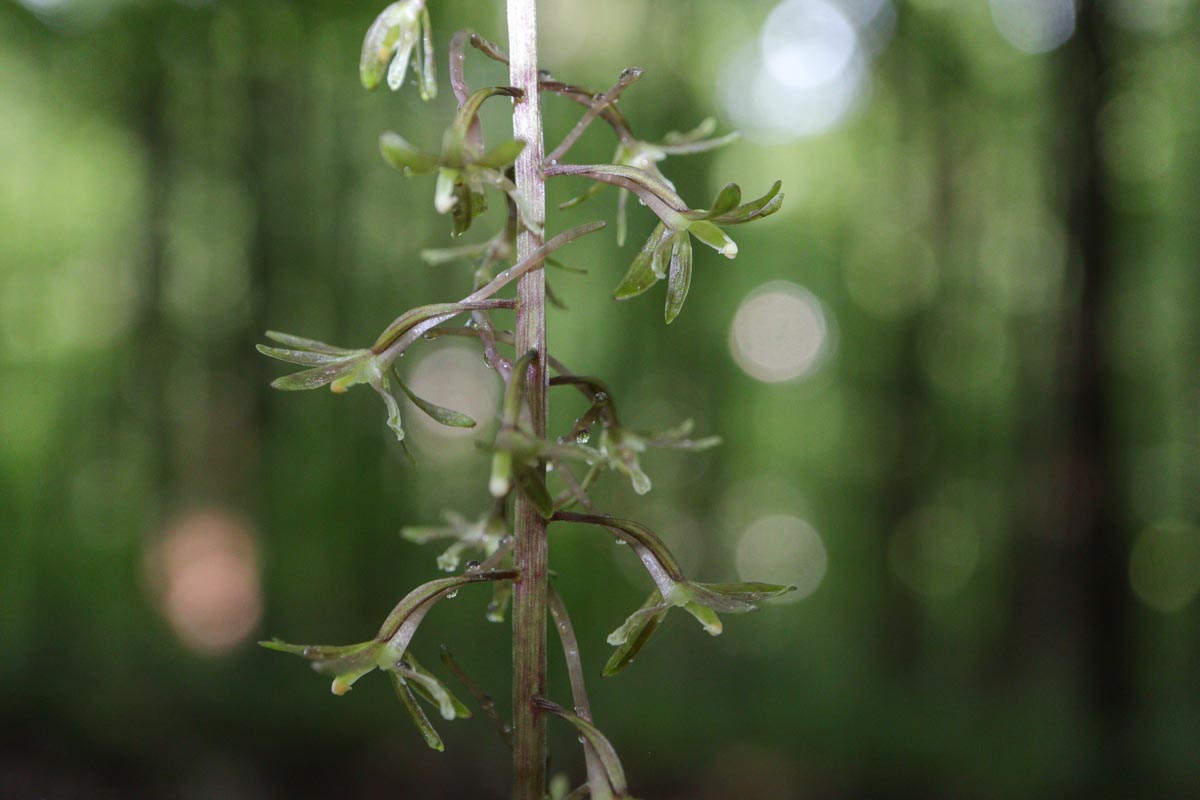Though most people think of orchids as denizens of tropical forests and grocery stores, they are quite common in my yard. The cranefly orchid first makes its presence known in autumn and winter with two toned leaves that are green above and purple below. Each plant has just one leaf, which persists through the coldest time of year to gather the unimpeded light in my deciduous forest. These hibernal leaves slowly shrivel and die in spring, as other plants unfold their leaves and steadily shadow the earth.
As with other orchids, they are symbiotic with mycorrhizal fungi, providing nutrients via photosynthesis and obtaining soil nutrients from the fungus. They have a further specialization with decomposing fungi, always growing on rotting wood. Fallen trees and branches are often viewed as unimportant to ecology, but they are vital to the germination and growth of cranefly orchids.
The flowering stalk is one to two feet tall with inconspicuous green and purple tinted tiny flowers, with much the same colors as the leaves. Most orchids have bilateral symmetry, but these flowers have skewed petals with flowers that tilt either left or right. This evolved because of their dependence on pollination by noctuid moths. In a unique and odd arrangement, when the moths gather nectar with their proboscis, as they probe deeply one of their compound eyes will brush against and gather the pollen. Orchids produce their pollen in sticky packets known as pollinia, allowing the tiny orchid pollen to be transferred as a unit. As the moths move between flowers, the pollen is transferred from their eyes, thus fertilizing these beautifully imperfect blooms.
Right now, there are hundreds of these flowers in my forest. Most are blooming singly but a few are gathered in small patches. It is easy to walk right by these small and somewhat drab flowers. Taking the time to observe them deeply, I marvel at their connections to hidden fungi underground, and nocturnal moths that ensure their survival. It is impossible to study nature without being drawn ever deeper by all the unexpected connections in a world where hidden threads link even the most disparate plants and animals.
